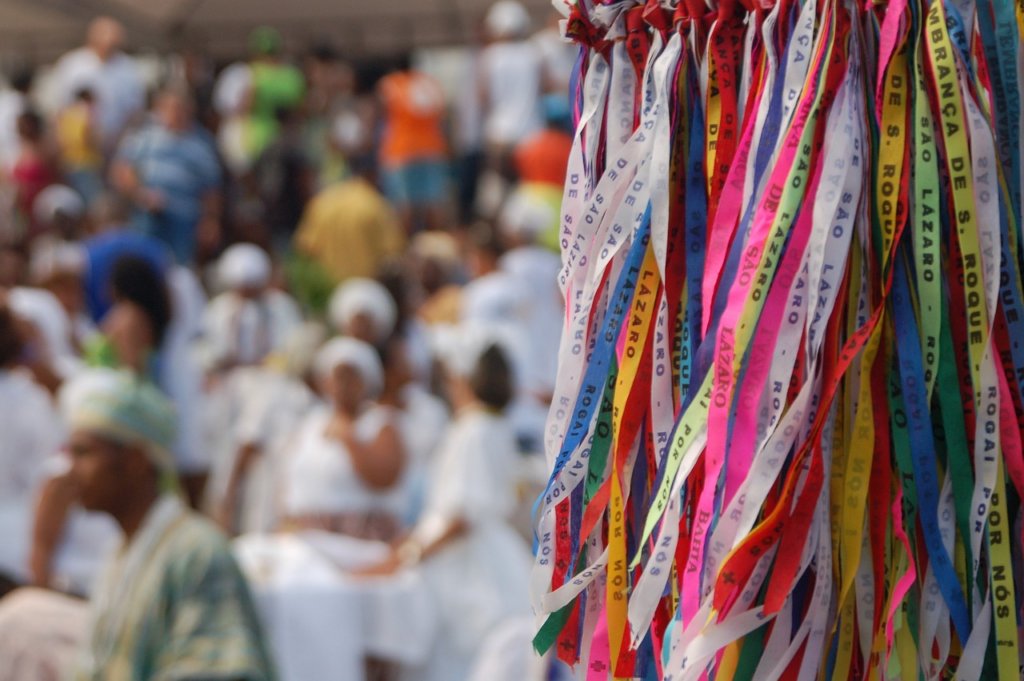Advertisement
Candomblé is an Afro-Brazilian religion rich in history, culture and spirituality. Recently, singer Anitta publicly revealed her connection to Candomblé, shedding new light and interest on this religious tradition.
Origin and History of Candomblé
Candomblé has its roots in traditional African religions, brought to Brazil by enslaved Africans during the colonial period. The main influences come from the Yoruba (Nigeria), Fon (Benin) and Bantu (Angola and Congo) cultures. These peoples brought with them their religious practices, mythologies and rituals, which merged and adapted in Brazil, giving rise to Candomblé.
Advertisement
Religious syncretism
During slavery, Candomblé practitioners were forced to hide their beliefs, disguising them under the guise of Catholicism, the religion imposed by the colonizers. This religious syncretism led to the association of orishas, voduns and inquices (African deities) with Catholic saints.
For example, the orisha Oxóssi was associated with São Sebastião, and Iemanjá was associated with Nossa Senhora dos Navegantes. This disguise helped to preserve African traditions under the watchful eye of the plantation owners and colonial authorities.
Advertisement
Consolidation in Brazil
With the abolition of slavery in 1888, Candomblé began to consolidate itself as a distinct religion in Brazil. The terreiros (places of worship) became centers of cultural and religious resistance, where the descendants of Africans could freely practice their traditions. Bahia, especially the city of Salvador, emerged as one of the main centers of Candomblé, but the religion also spread to other regions of Brazil.

Candomblé Practices and Beliefs
Orixás, Voduns and Inquices
In Candomblé, deities are venerated in different nations or lineages, each with their own characteristics and mythologies. The main deities include the orixás (Ketu/Nagô nation), voduns (Jeje nation) and inquices (Banto nation). Each deity is associated with specific elements of nature, forces and attributes, and are worshipped through rituals and offerings.
Rituals and Festivities
Candomblé rituals are rich in symbolism and involve music, dance, chants and offerings. Each orixá has its own specific preferences in terms of food, colors and rhythms. The main rituals include:
- Festa de Iemanjá: Celebrated on February 2, this is one of Candomblé's best-known festivals, dedicated to the queen of the sea.
- Xirê: A sequence of songs and dances in honor of the orixás, performed during festivals and ceremonies.
- Initiation (Feitura de Santo): The process by which a person becomes an adherent of Candomblé, undergoing purification rituals and learning about their head orixá.
Casa de Santo
Candomblé terreiros are sacred places where ceremonies take place and where the religious community gathers. Each terreiro is led by a priest or priestess, known as a pai-de-santo or mãe-de-santo. These leaders have a deep knowledge of the traditions and rituals and play a crucial role in providing spiritual guidance to the members of the community.
The Influence of Candomblé on Brazilian Culture
Candomblé has a significant influence on Brazilian culture, especially in music and art. Rhythms such as samba and axé have their roots in Candomblé's musical traditions. Instruments such as atabaques and agogôs, used in rituals, are also common in Brazilian popular music.
Carnival
The Brazilian Carnival, one of the biggest popular festivals in the world, also reflects the influence of Candomblé. Many blocos and samba schools incorporate religious themes and elements into their performances, celebrating the orixás and Afro-Brazilian traditions.
Literature and Cinema
Candomblé has been portrayed in various literary and cinematographic works, contributing to the dissemination and appreciation of this tradition. Authors like Jorge Amado and filmmakers like Glauber Rocha have explored the universe of Candomblé in their works, highlighting its cultural and spiritual richness.
Anitta and Candomblé
Anitta, one of Brazil's most popular singers, has revealed her connection with Candomblé in interviews and on social media. She highlighted how the religion has helped her find balance and spiritual guidance in her personal and professional life. Anitta shared that she attends a terreiro and actively participates in the rituals and festivities, highlighting her commitment to the traditions of Candomblé.
Career Impact
Anitta's connection with Candomblé also influences her art and public image. She has incorporated Afro-Brazilian cultural elements into her performances, music videos and costumes, promoting greater visibility and appreciation of Afro-Brazilian traditions. This association also helps to combat prejudices and stigmas surrounding Candomblé, by showing that it is a religion of great spiritual and cultural depth.
Defense of Religious Diversity
By speaking openly about her faith, Anitta plays an important role in defending religious diversity in Brazil. Her prominent position as a public figure helps to promote tolerance and respect for all religious traditions, challenging prejudices and promoting inclusion.
A vibrant religion with deep African roots
Candomblé is a vibrant and rich religion, with deep African roots and a significant presence in Brazilian culture. Anitta's revelation about her connection to Candomblé has brought a new wave of interest and respect for this tradition.
By exploring the origins and practices of Candomblé, we can better appreciate its contribution to Brazil's cultural identity and the spirituality of its followers. The history of Candomblé is a story of resistance, resilience and the celebration of diversity, values that continue to inspire and enrich Brazilian society today.
See also: What are the world's 7 main religions? See the curiosities
May 30th, 2024

She has a degree in Languages - Portuguese/English, and is the creator of the Escritora de Sucesso website. As a writer, she seeks to expand everyone's knowledge with relevant information on various subjects. At SoMuchToSayToday, she brings news and content ranging from entertainment to the country's economic situation.


